
External Research
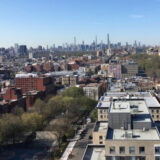 Quantifying the impact of biogenic and anthropogenic fluxes on the atmospheric composition of the New York City Metro Area
Quantifying the impact of biogenic and anthropogenic fluxes on the atmospheric composition of the New York City Metro Area
Biological fluxes of carbon dioxide through respiration and photosynthesis and tree production of volatile organic compounds (VOCs) such as isoprene can play an important role in modulating atmospheric chemistry in urban areas. However, the importance of urban ecosystems as sources and sinks of carbon dioxide and VOCs in cities has only recently gained attention from the scientific community. We are using the forest, lawn, urban savanna and “street tree” environments at NYBG to quantify a) rates of tree growth, b) soil and ecosystem respiration, and c) tree isoprene production. These field measurements are being combined with models to improve quantification of vegetated ecosystems’ influence on atmospheric chemistry in New York City.
PI: Dr. Andrew Reinmann, City University of New York; Dr. Róisín Commane, Columbia University
Contact: areinmann@gc.cuny.edu; r.commane@columbia.edu
Link: http://nyaaq.ldeo.columbia.edu
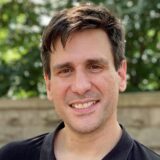 Fine-resolution characterization of water stress in New York City urban forests with ECOSTRESS
Fine-resolution characterization of water stress in New York City urban forests with ECOSTRESS
Urban forests like the New York Botanical Garden (NYBG) are essential to mitigate the negative impacts of a warming climate in urban areas that are already under the added burden of an urban heat island, where the built environment makes the temperature much warmer than nearby rural areas. As part of NASA’s Ecosystem Spaceborne Thermal Radiometer Experiment on Space Station (ECOSTRESS) mission, we will link observations of cooling in urban forests from space with measurements of plant function in specific urban trees at the NYBG. By collecting records of water movement and storage in trees, we aim to estimate plant transpiration and detect potential water stress during summertime conditions, especially during heat wave events. Our findings could have implications for understanding water stress in all NYC green spaces, as well as in other urban areas in the Northeast and beyond.
PI: Dr. Nick Steiner, The City College of New York
Contact: nsteiner@ccny.cuny.edu
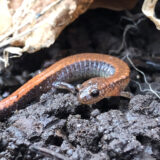 Genetic and microbial foundations of resistance in Plethodon cinereus
Genetic and microbial foundations of resistance in Plethodon cinereus
Amphibians are threatened by urbanization and infectious diseases. The eastern redback salamander, Plethodon cinereus, is endemic to the highly urbanized northeastern USA and shows high resistance to both of these stressors. Thus, we are studying the genetic and microbial foundations of resistance to environmental stress in Plethodon cinereus. We can harness insights from our research to inform conservation strategies to protect vulnerable amphibian populations.
PI: Dr. JD Lewis, Fordham University
Project leader: Nina Naghshineh, Ph.D. Candidate, Fordham University
Contact: nnaghshineh@fordham.edu
Lab website: https://forestmicrobelab.com/
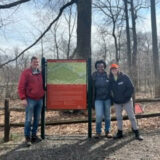 Measuring PFAS in Throughfall at the New York Botanical Garden
Measuring PFAS in Throughfall at the New York Botanical Garden
Per-and polyfluoroalkyl substances (PFAS) are widely used, long lasting chemicals, that slowly degrade in the environment over time. Due to their widespread use and persistence in the environment, PFAS can be found in drinking water, soils, wildlife, and human plasm, raising public health and resource management concerns. PFAS can enter the atmosphere through industrial activities, travel long distances once in the atmosphere, and are removed from the atmosphere through wet and dry deposition. A past 2019 USGS surface water monitoring study documented the presence of PFAS within the Bronx River, Bronx, NY (Bayraktar and Fisher, 2021). The industrial and highly urbanized setting of the Bronx River suggests that the stream is influenced by atmospheric deposition of PFAS; however, the magnitude of this type of contamination is not well documented in the scientific literature. This study aims to identify the magnitude and mixture of atmospheric PFAS entering the Bronx River and surrounding landscape near the New York Botanical Garden. Results of the study will also document the magnitude of atmospheric PFAS in the urban environment that could potentially pose risks to human and ecological health.
PI: Ashley Smith, U.S. Geological Survey
Contact: amsmith@usgs.gov
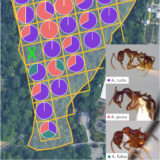 The buildup from intra to inter-specific variation in an ecologically important ant complex
The buildup from intra to inter-specific variation in an ecologically important ant complex
Ants in the genus Aphaenogaster play an important role in the community structure of North American deciduous forests through their functions as seed dispersers. Myrmecochory, or specialized seed dispersal by ants, is common among woodland forbs, and Aphaenogaster ants play a disproportionate role in this process, being responsible for the majority of dispersal events in the Northeast. It is currently difficult to discern which species are responsible for seed dispersal as several species within Aphaenogaster are morphologically similar and their phylogenies poorly resolved. Since these ants are morphologically and genetically variable, some of the variation in their effectiveness of seed dispersal may be better explained by something other than what species they are. We’re looking at life history differences at NYBG, to hopefully get a better idea of how these ants are different from each other and dividing up space when they live in close proximity.
PI: Gabriella Quartuccia, PhD Candidate, Binghamton University (SUNY)
Contact: gquartu1@binghamton.edu
Link: http://www.powellevolab.com/
 Effect of forest management on carbon sequestration
Effect of forest management on carbon sequestration
Improved forest management (IFM) is part of the portfolio of carbon dioxide removal (CDR) strategies that the US may employ to reach net neutral greenhouse gas emission goals by 2050. Based on the long history of forest inventory records from the NYBG, we aim at identifying effects of past management intervention on the dynamics of various forest carbon pools, as well as projecting the potential of management in improving future forest carbon sequestration using modeling tools such as the forest vegetation simulator (FVS). Possible impacts from natural disturbances including extreme weather events and outbreaks of pests and diseases are also taken into account.
PI: Dr. Weier Liu, Dr. Sara Kuebbing, Yale University
Contact: weier.liu@yale.edu; sara.kuebbing@yale.edu
Link: Yale Applied Science Synthesis Program (YASSP) https://synthesis.yale.edu/projects/forest-projects